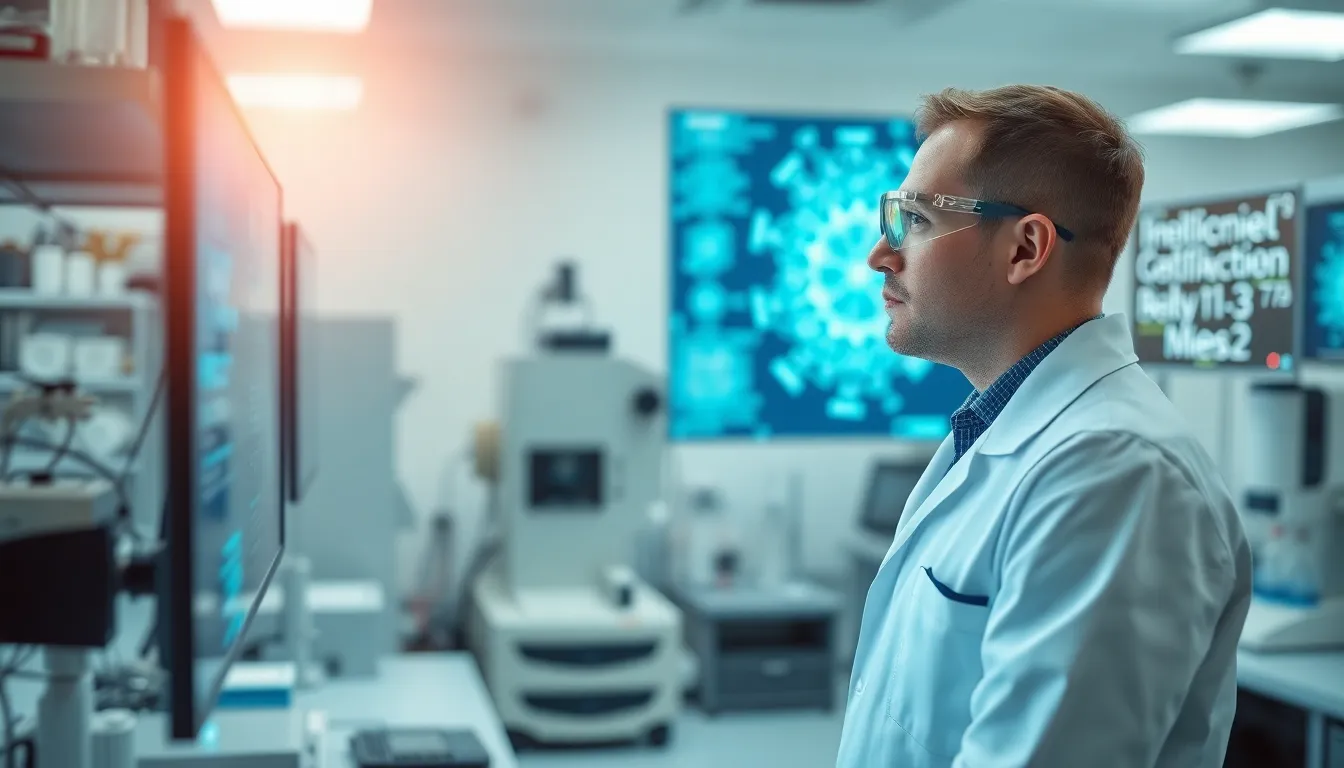Table of Contents
ToggleIn a world where science fiction often becomes science fact, the life sciences sector is riding a technological wave that’s both thrilling and transformative. From artificial intelligence diagnosing diseases faster than a doctor can say “Google it” to CRISPR gene editing that sounds like something out of a superhero movie, the latest trends are reshaping how we understand health and disease.
But hold onto your lab coats, because it’s not just about flashy gadgets and buzzwords. These innovations are driving breakthroughs that could revolutionize patient care and research. As technology continues to evolve, life sciences are becoming less about the old-school lab bench and more about high-tech solutions that push boundaries. Buckle up as we dive into the fascinating trends that are making waves in the life sciences arena and discover how they’re set to change the game for good.
Overview of Technology Trends in Life Sciences
Artificial intelligence (AI) plays a crucial role in life sciences, particularly in disease diagnosis and personalized medicine. This technology analyzes vast datasets, enabling more accurate predictions and tailored treatments. Machine learning algorithms identify patterns in patient data, improving diagnostic accuracy and treatment efficacy.
Genomics continues to see significant advancements, especially with CRISPR gene editing. This technology allows precise modifications to DNA, opening pathways for innovative therapies. By targeting specific genes, researchers can correct genetic disorders at their source, leading to groundbreaking healthcare solutions.
Wearable devices and remote monitoring technologies enhance patient management. These tools collect real-time health data, fostering proactive care and immediate intervention. Telehealth platforms expand access to healthcare services, allowing patients to consult with specialists without needing to travel.
Data analytics is a pivotal force in clinical research. Advanced analytics streamline the trial process, identifying suitable candidates and monitoring results. Predictive analytics support decision-making, guiding researchers toward successful outcomes more efficiently.
Cloud computing creates opportunities for collaboration and data sharing. It enables researchers and institutions to access vast resources without specialized infrastructure. With enhanced data security measures, researchers share findings, supporting collective advancements in life sciences.
Blockchain technology ensures secure and transparent data transactions. This innovation enhances patient data privacy and integrity, crucial for maintaining trust in healthcare systems. By creating immutable records, it monitors drug supply chains, reducing counterfeiting.
These technology trends in life sciences illustrate the sector’s dynamic evolution. Embracing these innovations reshapes the future of healthcare, emphasizing improved patient outcomes and research advancements.
Impact of Artificial Intelligence

Artificial Intelligence (AI) significantly influences life sciences, driving advancements across various domains. Reinforcing breakthroughs in research and clinical practices, AI enhances efficiency and precision.
AI in Drug Discovery
AI revolutionizes drug discovery, streamlining the process of identifying potential compounds. It employs machine learning algorithms to analyze vast biological datasets, which leads to faster and more accurate predictions of drug efficacy. By predicting patient responses and interactions, AI reduces the time it takes to bring new therapies to market. Companies such as Atomwise utilize AI technologies to screen millions of compounds quickly. This approach decreases costs associated with traditional drug development methods and increases the likelihood of successful clinical trials.
AI in Patient Care
AI enhances patient care through personalized treatment plans and improved diagnostic accuracy. It analyzes electronic health records and other patient data to identify patterns that may go unnoticed. Healthcare providers can then tailor therapies based on individual responses, leading to better outcomes. Virtual health assistants powered by AI deliver immediate support and guidance, improving patient engagement and compliance. Machine learning algorithms continuously learn from new data, further refining recommendations over time. This adaptability ensures that patient care remains relevant and effective as new medical insights emerge.
Advancements in Genomics
Innovations in genomics significantly influence the life sciences sector. Key developments, particularly in CRISPR technology and personalized medicine, drive this transformation.
CRISPR Technology
CRISPR technology revolutionizes gene editing, permitting precise modifications at specific DNA locations. Scientists leverage this technique to target genetic disorders, offering solutions that were once unattainable. Recent advancements enhance the efficiency and accuracy of CRISPR, reducing off-target effects. Applications include treatments for conditions like sickle cell disease, showcasing its potential for impactful therapies. Researchers continue to explore its use in combating infectious diseases and advancing agricultural biotechnology, underscoring its broad applicability. These achievements illustrate CRISPR’s significant role in shaping the future of genetic research and therapy.
Personalized Medicine
Personalized medicine tailors healthcare based on individual genetic profiles and environmental factors. Advances in genomics enable practitioners to develop targeted therapies that align with a patient’s specific genetic makeup. Techniques like genomic sequencing allow for precise identification of mutations responsible for diseases. With the aid of artificial intelligence, clinicians analyze vast datasets for insights into treatment efficacy. This approach enhances drug formulations, increasing their effectiveness while minimizing adverse effects. As the life sciences sector embraces personalized strategies, patient outcomes and satisfaction improve markedly.
The Role of Big Data
Big data plays a vital role in transforming the life sciences industry. Its ability to harness and analyze vast datasets significantly improves research and patient care.
Data Analytics in Research
Data analytics streamlines the research process. Researchers now use advanced algorithms to analyze clinical trial data, which leads to quicker decisions and innovative approaches. By identifying patterns, analytics helps in predicting outcomes and improving trial designs. Studies have shown that data-driven insights can enhance the speed of drug development by 30 percent. This accelerated timeline allows researchers to respond swiftly to emerging health challenges.
Data Security and Privacy
Data security and privacy remain top priorities in life sciences. Technology such as blockchain improves data integrity through decentralized verification processes. Ensuring compliance with regulations like HIPAA protects patient information. Organizations implement advanced encryption techniques to safeguard sensitive data during transmission and storage. A focus on transparent data practices builds trust among patients and contributes to a secure healthcare system.
Innovations in Medical Devices
Innovations in medical devices significantly enhance patient care and outcomes. The integration of technology with traditional medical approaches leads to exciting advancements.
Wearable Technology
Wearable technology plays a critical role in monitoring patients’ health remotely. Devices such as smartwatches and fitness trackers provide real-time data, allowing healthcare providers to track vital signs and trends continuously. These devices help in chronic disease management, offering insights into heart rate, glucose levels, and physical activity. By collecting and transmitting data instantly, wearable technology promotes proactive interventions and personalized care plans, ultimately improving patient engagement and adherence to treatment. As a result, healthcare providers can make timely decisions based on accurate information provided by these devices.
Telemedicine
Telemedicine transforms healthcare delivery by facilitating remote consultations. High-quality video conferencing tools enable patients to connect with healthcare professionals without needing to visit clinics or hospitals. This method proves effective for routine check-ups, specialist consultations, and mental health services. Telemedicine reduces barriers such as transportation costs and time constraints, making healthcare more accessible. Additionally, it supports the management of ongoing treatments, allowing for quick adjustments in patient care plans. Studies indicate that telemedicine enhances patient satisfaction and expands healthcare access, particularly in underserved areas.
The life sciences sector is witnessing a remarkable transformation driven by technology. Innovations like AI and CRISPR are not only enhancing research but also improving patient care. As these advancements continue to unfold they promise to redefine healthcare delivery and outcomes.
The integration of big data analytics and wearable technologies is paving the way for more personalized and proactive approaches to health management. Telehealth platforms are breaking down barriers to access ensuring that quality care is available to more people than ever before.
With a focus on data security and patient privacy the future of life sciences looks bright. These trends signal a new era where technology empowers both patients and healthcare providers to achieve better health outcomes.



